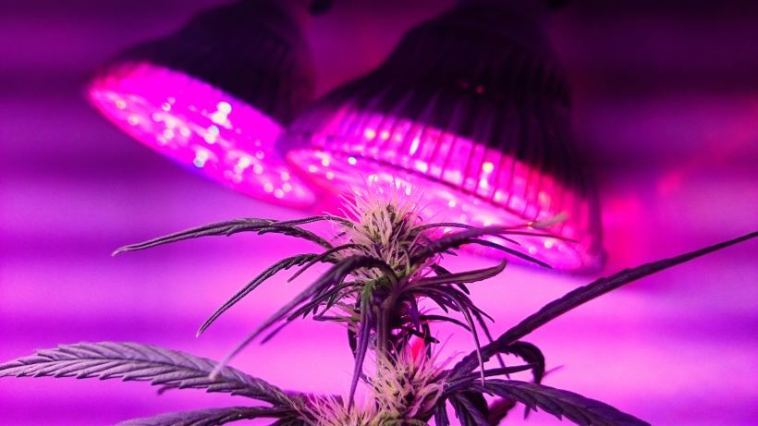- Like
- SHARE
- Digg
- Del
- Tumblr
- VKontakte
- Flattr
- Buffer
- Love This
- Save
- Odnoklassniki
- Meneame
- Blogger
- Amazon
- Yahoo Mail
- Gmail
- AOL
- Newsvine
- HackerNews
- Evernote
- MySpace
- Mail.ru
- Viadeo
- Line
- Comments
- Yummly
- SMS
- Viber
- Telegram
- JOIN
- Skype
- Facebook Messenger
- Kakao
- LiveJournal
- Yammer
- Edgar
- Fintel
- Mix
- Instapaper
- Copy Link
Introduction
Providing your plants with optimal conditions is crucial for their health and growth. Aside from having proper nutrients and water, adequate lighting is of utmost importance for growing marijuana plants.
Lighting was one of the trickier aspects to get right, plus it was quite an investment. Thankfully, nowadays, LED lights are widely available and are perfect for maintaining ideal lighting conditions for your plants.
Here are some tips on how to up your cannabis LED growing game and end up with a superb product every season.
1. Amount of light
One of the common mistakes weed gardeners make is that they use too little or too many light units per plant. One light per 1.5 feet squared is optimal, but if you’re someone who plans on growing only one or two plants for personal use, you shouldn’t bother with professional lighting. Fixing up a regular 75 watts LED lightbulb above your plant should be plenty for your cannabis to grow.
2. Positioning is crucial
When using LED lights, you have to be especially careful where you position the lights, particularly regarding their height. This is due to LED lights being harsher, meaning that they tend to create shade easier and are more directional. Additionally, to ensure that every part of your plant is getting enough light, you should top and prune them according to their vegetative and bloom cycle. If you’d like to invest in some top-notch LED lights, peep LED grow lights on Growbuds – their lights will take your marijuana to the next level.
3. Height is important
Pay close attention to how near the lights are to the canopy. During the vegetative cycle, they should be a bit further away from your plant – 48” is ideal if you’re using stronger lights. However, when the plant is in its bloom, you are free to place the lights to about 24” to 36” from the plant. Be careful, if you put the lights too close, it may result in light bleaching. Light bleaching is when marijuana leaves turn white since they were placed too close to the grow light. Too much light exposure may result in a complete destruction of buds, so be careful.
4. Temperature is the key
HID lighting, sunlight, and LED lights provide some heat to the plants as well as the light. However, the amount of heat they emit varies, which means you need to set the temperature parameters accordingly. LED lights don’t emit Infrared light, whereas other sources of light typically do. This means that you should tinker with the parameters a little bit if you’re just now switching to LED. The ideal temperature starting point is around 83F to 85F, however, you shouldn’t be afraid to play around with the heat a little bit and increase it as their growth cycle continues. Take some notes and write down your method since your own experience is your best teacher.
5. Go light on nutrition
Most of the inexperienced growers make this mistake – they overwater and overfeed their plants. When you grow with LED, water evaporates a bit quicker which can lead to roots that are highly concentrated with nutrients. The top professionals advise you to water your plants with plain water once in three times to water down the nutrition levels of the roots.
6. You can always dim the lights
One of the great advantages of LED lights is that many come with the option of lowering the lights. Since light bleaching and burning happens to most inexperienced growers, this LED lights’ option makes them perfect for beginners. If you notice that the leaves are turning brown or white, you may slightly turn down the intensity of the lights which should stop the burning or bleaching process.
The Takeaway
With the right growing conditions, lighting, and skill, you can turn out premium cannabis buds that the most enthusiastic cannabis lovers would go crazy for.
Because lighting is one of the more difficult aspects to master when growing cannabis, investing in quality LED lights can dramatically improve your grows.
Thankfully, LED lights are readily available and are perfect for maintaining ideal lighting conditions for your plants.
So go ahead, master these tips and take your next harvest to new heights!
